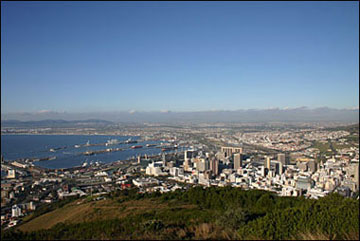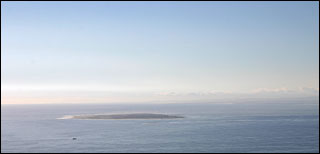|
| The Cape Winelands. Early Dutch settlers
were granted tracts of land on the Cape. The temperate Mediterranean
climate
and variable soil types has ensured the survival of the early
wine making traditions. South Africa is the world's seventh largest
producer of wines. We did some wine tasting there and decided
that California growers don't have anything to worry about just
yet. |
|
|
| Cape Dutch architecture is prevalent
throughout the Cape's winelands |
Still recovering from the apartheid years, South
Africa is struggling to develop a black middle-class. Vast shanty
towns/townships sprawl across the Cape flats just outside of Cape Town.
The government has tried to improve conditions by providing electricity.
These
places are home to possibly two million or more people – no one
really knows.
|
|
|
Kirsten National Botanical Garden in Cape Town.
Located on the eastern side of Table Mountain it preserves
and propagates indigenous plant species. The property was bequeathed
to the state by Cecil
John Rhodes in 1902.
|
The Bird of Paradise is abundant in Hawaii and Southern
California but is actually indigenous to South Africa. |
|
| On our second day in Cape Town the weather
improved and the tablecloth of clouds lifted revealing
the splendid mesa of Table Mountain in all its South African
glory. The bulk of Table Mountain is composed of layer upon layer
of erosion resistant sandstone sediment. |
 |
 |
| Signal Hill provides spectacular vistas of Cape Town
and its harbor. Cape Town is South Africa's oldest city. It was
established in 1652 by the Dutch to grow and provide fresh vegetables
to passing merchant ships. Sailors at sea for long periods without
fresh food suffered from scurvy. Cape Town became a welcome
stop to drop anchor and replenish supplies. |
Turning leeward I spotted Robben Island where Nelson
Mandela spent much of his 27-year imprisonment. Today, the island
is an important ecological and historical heritage site. |
|

